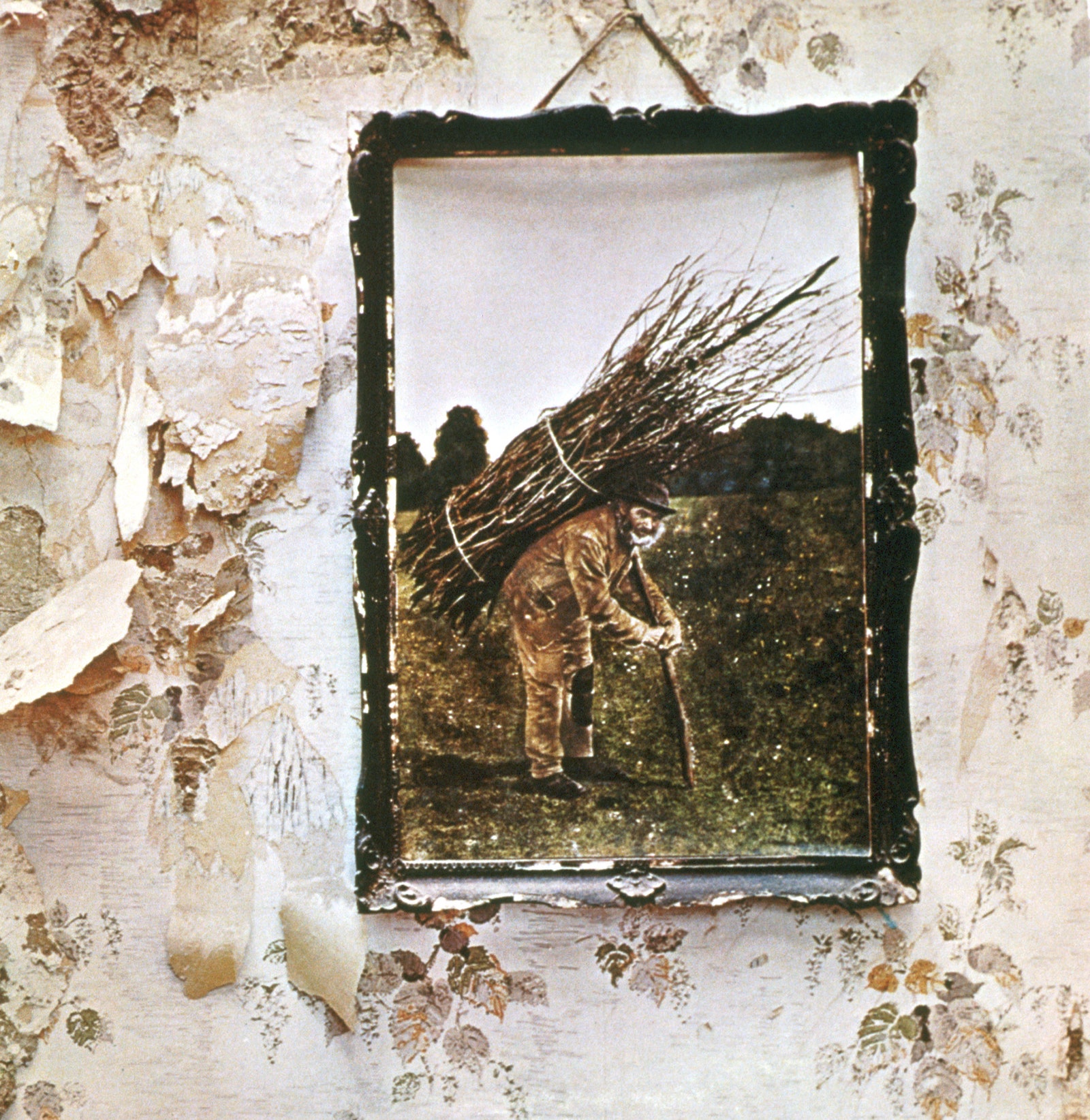Exactly 52 years after the release of Led Zeppelin’s fourth studio album—widely referred to as Led Zeppelin IV—the identity of the man gracing its cover has been revealed, The Guardian and The New York Times report. The cover artwork famously features an elderly man hinged at the waist, weighed down by a bale of long twigs strapped to his back. Now, a research fellow in South West England named Brian Edwards has discovered that the original source of the scene: a late Victorian era photograph of a Wiltshire thatcher named Lot Long.
A visiting research fellow with the regional history center at the University of the West of England, Edwards came across the photograph while he was perusing the photo archives of the Wiltshire Museum in Devizes, England. He instantly recognized Long as the mysterious man on the cover of Led Zeppelin IV, an album to which he’s been listening since it was released in 1971. The photograph was captured by Ernest Farmer, who is now the subject of an exhibition at the Wiltshire Museum.
Edwards’ discovery is notable not only because it reveals the identity of the bearded thatcher, but also because, for many years, the image was widely believed to be a painting. Led Zeppelin’s record sleeve depicts a re-colored version of the image hanging in a frame on a wall, which Robert Plant and Jimmy Page found in an antique shop in the village of Pangbourne, as legend has it. The source photograph is black and white, and the colorized version has never been recovered.
Additional research into Lot Long suggests that he was born in Mere in 1823 and died in 1893, as the Wiltshire Museum point out on their website. At the time the photograph was taken, he was a widower living in a cottage in Shaftesbury Road, Mere.
The Wiltshire Museum’s upcoming exhibition of Ernest Farmer photographs will focus on other images that Edwards came across during his research, including portraits of rural workers from the period.
NOVEMBER 8: Album cover of “Led Zeppelin IV”. (Photo by Michael Ochs Archives/Getty Images)







